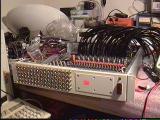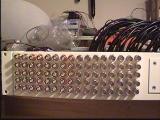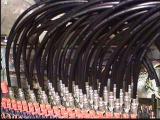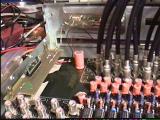

| Channel |
Input |
| 0 |
1 |
5 |
9 |
13 |
17 |
| 1 |
2 |
6 |
10 |
14 |
18 |
| 2 |
3 |
7 |
11 |
15 |
19 |
| 3 |
4 |
8 |
12 |
16 |
20 |
| ASCII character |
Decimal |
Function |
| V |
86 |
check if video present on channel 21 |
| B |
66 |
binary mode |
| C |
67 |
character mode |
| L |
76 |
latch outputs |
|
|
 |
 |
 |
 |